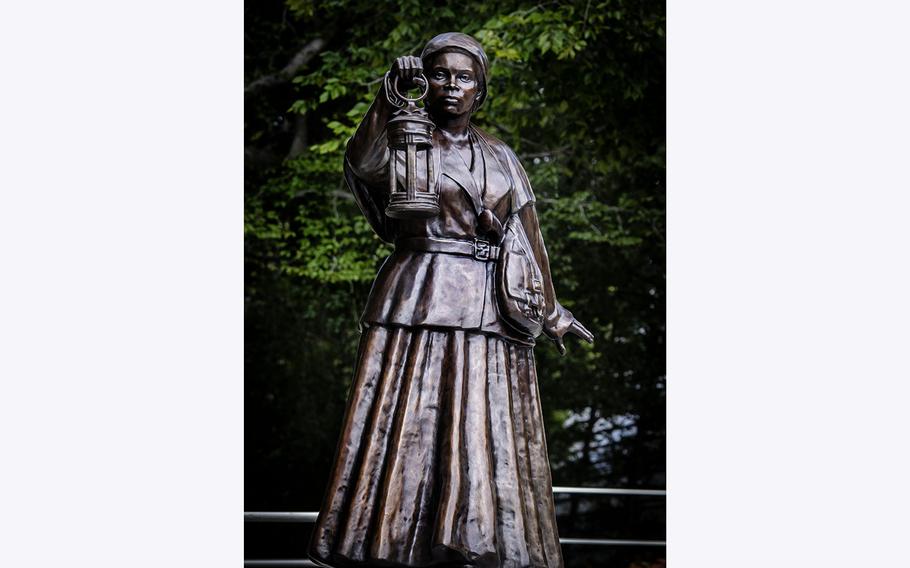
The Harriet Tubman statue recently dedicated at CIA headquarters, in Langley, Va. (Bill O’Leary/Washington Post )
WASHINGTON - "A woke military is a weak military," former CIA director Mike Pompeo tweeted Tuesday.
A few weeks earlier at CIA headquarters, in Langley, Va., current CIA director William J. Burns had a different perspective: cutting the ribbon on a new statue of abolitionist and military spy Harriet Tubman, a move some might decry as "woke" for an intelligence agency. Burns shared ribbon-cutting duties with Tina Wyatt, a descendant of Tubman's who was invited to the private ceremony.
"It was awesome," said CIA Museum Director Robert Byer, who attended the ceremony, in an interview with The Washington Post. He added it was "moving" but declined to provide further details, in classic CIA style.
CIA employees proposed the statue project after attending a team-building program in Maryland, where Tubman was raised and where she eventually led scores of enslaved people to freedom. It is a reproduction of a statue by artist Brian Hanlon that stands in front of the New York State Equal Rights Heritage Center in Auburn, N.Y., and was made with the artist's permission.
The statue joins two others on the CIA campus that depict Nathan Hale, an American spy killed by the British during the Revolutionary War, and William J. Donovan, considered the "founding father" of the CIA.
At first blush, Tubman, a civil rights activist who famously and repeatedly broke the law, might seem an unlikely inspiration for today's foreign intelligence officers. But Byer said there was a lot of overlap between the "ethos" of the CIA and Tubman's.
Since 2018, the CIA has taken some employees on "Leadership Ethos Rides" retracing the path of Tubman's Underground Railroad missions along the Eastern Shore. On these missions, she led enslaved people to safety and freedom - actions that in the intel community would be classified as "exfiltration from a denied area," Byer said. The rides highlight Tubman and the CIA's shared traits, Byer said, like "dedication, sacrifice and stewardship."
The statue depicts Tubman when she was younger than she appears in most photographs. She holds a lantern in her raised right arm, symbolically lighting the path to freedom and perhaps evoking the Statue of Liberty. Her left arm reaches back, her wrist tilted just so, as if to warn her "passengers" on the Underground Railroad not to move just yet.
During the Civil War, when Tubman was in her 40s, she became the first woman to plan and lead a U.S. Army expedition. In South Carolina, Tubman went behind enemy lines dressed as a enslaved person to gather intelligence from enslaved people about the locations of Confederate torpedoes on the Combahee River. With this intel, Union gunboats were able to move up the river undetected and successfully raid Confederate strongholds. On their way back down the river, Union troops freed hundreds of enslaved people, many of whom joined the fight.
The Combahee River Raid has earned Tubman spots in the Military Intelligence Corps Hall of Fame and the International Spy Museum, though Byer pointed out that since she wasn't stealing secrets and giving them to foreign intelligence, she wasn't a "spy" in the strictest sense, but an "intelligence collector."
Still, her remarkable service points to another of the CIA's goals, one that some people might dismiss as too modern, too "woke," but that Byer argued was key.
"We need diversity in order to do our mission here," Byer said. "If those slaves hadn't trusted Harriet Tubman, they wouldn't have given her information."